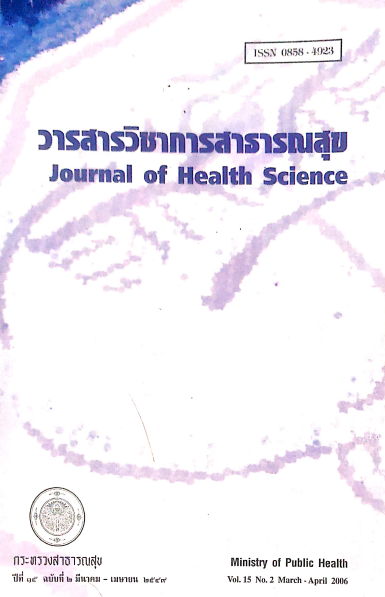Financing Health Promotion in Thailand
Keywords:
finance, health promotion, ThailandAbstract
Burden of diseases caused by several risk factors could be greatly reduced through effective public health interventions, prevention and health promotion measures, for example, the promotion of safe sex, alcohol and tobacco consumption control, promotion of physical fitness and exercise The objective of this comparative study was to assess the financing of health promotion between 2 different country-contexts: Thailand and OECD members based on analysis of secondary data. The duration of the study was between August 2005 and March 2006.
It was found that Thailand spent 8.9 percent of the total health expenditure on prevention and health promotion (PHP). Of the total spending on PHP, 99.42 percent came from the government funding sources and none from social health insurance. Whereas in the 14 selected members of OECD (Organization for Economic Cooperation and Development), the average investment in PHP was lower than that of Thailand, 3.5 percent of the total health expenditure, and 73.5 percent came from the government, 12 percent from social health insurance. It is, therefore, concluded that, Thailand invested quite heavily in PHP in terms of proportion of total health expenditure, though in per capita spending on PHP, it was still small. The Thai government plays the leading role in PHP, whereas social health insurance plays very minor role.
It is recommended that diversification of funding sources for PHP by encouraging social health insurance to include PHP in its benefit package to the beneficiaries, promoting investment by private sector through tax incentive for firms which implement health promotion activities in the workplace and collecting additional tax from industries which polluted the environment and jeopardized human health by introducing environmental tax and levies.
Downloads
Downloads
Published
How to Cite
Issue
Section
License
Copyright (c) 2019 Journal of Health Science

This work is licensed under a Creative Commons Attribution-NonCommercial-NoDerivatives 4.0 International License.







